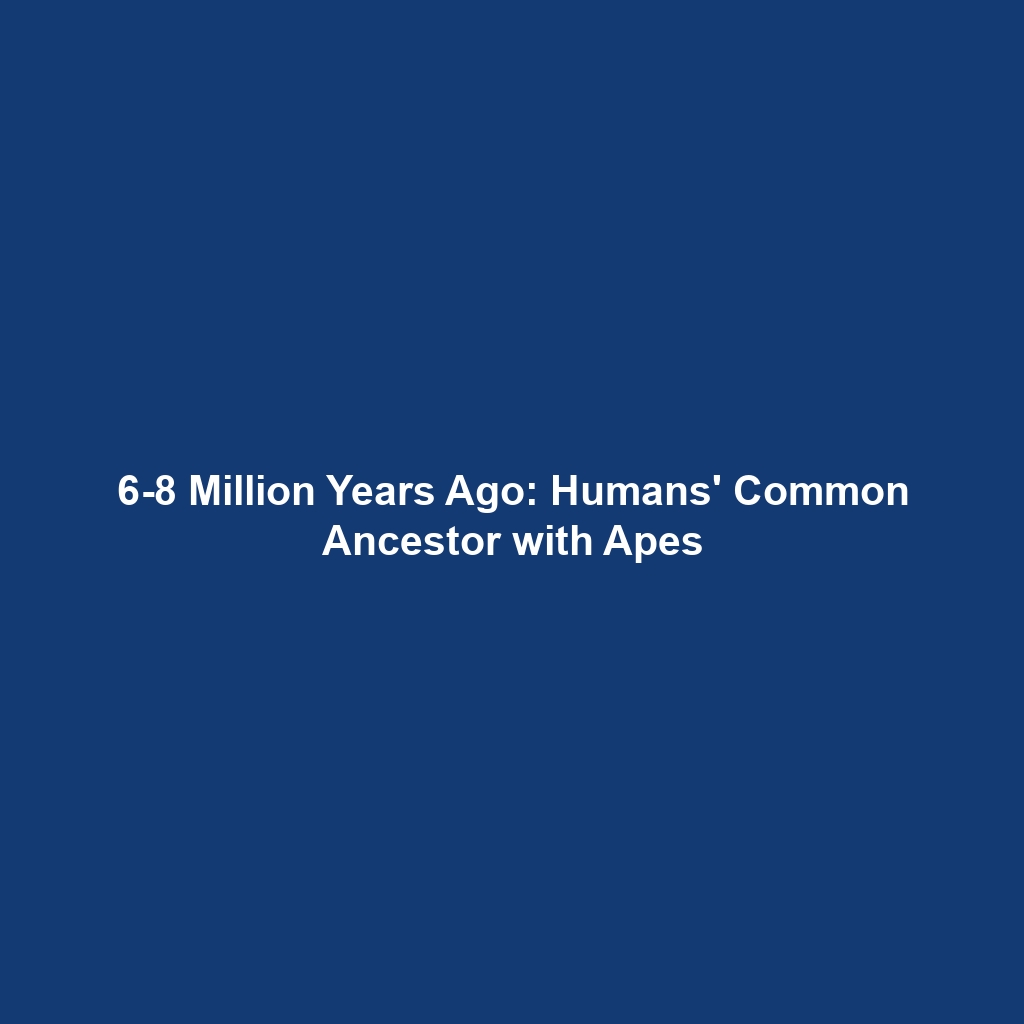Divergence: The Shared Ancestry of Humans and Great Apes
Introduction
The study of divergence highlights a fascinating milestone in human evolution, indicating that humans and modern great apes—chimpanzees, gorillas, and orangutans—share a common ancestor that lived approximately 6–8 million years ago. This divergence is a pivotal event in evolutionary biology, providing crucial insights into the evolutionary paths of Homo sapiens and their closest relatives. Understanding this shared ancestry sheds light on numerous physical and behavioral traits that define humans and our ape counterparts, emphasizing the interconnectedness of all primates.
Key Concepts
Divergence and common ancestry are foundational concepts in the field of human evolution. The following key aspects are essential for understanding this phenomenon:
1. Genetic Similarity
Genetic studies demonstrate that humans share approximately 98% of their DNA with chimpanzees, underlining the close genetic relationship between these species. This genetic proximity suggests that many traits that are unique to humans likely emerged after this ancestral split.
2. Evolutionary Adaptations
The divergence led to different evolutionary adaptations among species. While humans developed traits such as bipedalism and complex cognitive abilities, other great apes evolved traits suited for their unique environments, such as climbing in orangutans and social structures in gorillas.
3. Paleoanthropological Evidence
Paleoanthropological discoveries provide essential insight into this divergence. Fossils, such as those of Sahelanthropus tchadensis and Australopithecus, illuminate the physical changes that occurred as hominins evolved distinctively from their ape relatives.
Applications and Real-World Uses
The implications of the divergence of humans and great apes extend beyond mere academic interest. Relevant applications include:
- Conservation Efforts: Understanding common ancestry helps in developing conservation programs aimed at protecting endangered species like orangutans and gorillas.
- Medical Research: Studying genetic similarities between humans and chimpanzees can lead to advancements in medical research, particularly in understanding diseases.
- Evolutionary Psychology: Exploring behavioral traits across species enables researchers to better comprehend human psychology and social structures.
Current Challenges
Despite the significant advancements in understanding divergence, several challenges remain:
- Genetic Data Limitations: The accuracy of genetic data can be limited due to incomplete fossil records and the complexity of evolutionary lineage.
- Ethical Concerns: Research involving primates can raise ethical issues regarding animal rights and their environments.
- Interdisciplinary Barriers: Integrating findings from various scientific fields (evolutionary biology, anthropology, genetics) can be challenging.
Future Research and Innovations
Future research on the divergence between humans and great apes stands poised for exciting breakthroughs. Potential areas of innovation include:
- Advanced Genetic Sequencing: Innovations in genetic technology may yield more precise insights into our evolutionary past.
- Artificial Intelligence in Paleontology: Utilizing AI to analyze fossil data may enhance our understanding of evolutionary patterns.
- CRISPR Research: Investigating genetic editing techniques could lead to newfound applications in understanding gene function and evolution.
Conclusion
In conclusion, the divergence between humans and great apes around 6–8 million years ago has profound implications for our understanding of human evolution. Recognizing our shared ancestry offers insights into our evolutionary journey and highlights the importance of preserving our closest relatives. To further explore this fascinating subject, consider reading more about related evolutionary studies or visiting our research section for the latest developments in the field.

Leave a Reply